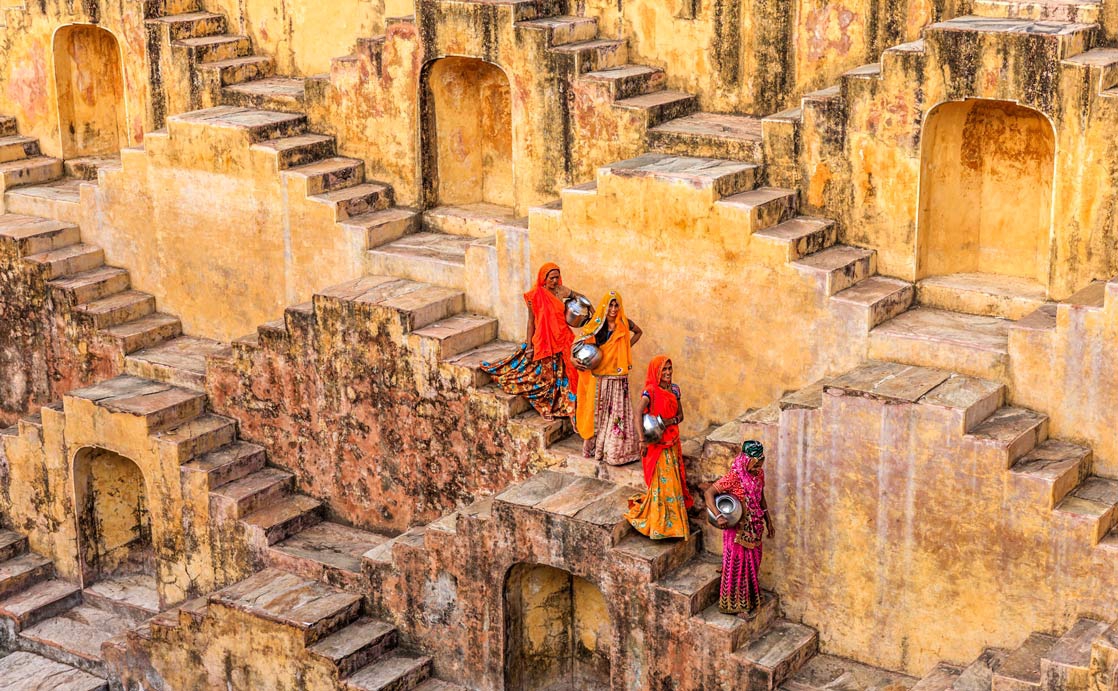The views expressed in our content reflect individual perspectives and do not represent the authoritative views of the Baha'i Faith.
A hundred and fifty years or so ago, Rudyard Kipling famously wrote “Oh, East is East, and West is West, and never the twain shall meet, Till Earth and Sky stand presently at God’s great Judgment Seat …”
According to the Baha’i teachings, the world has now reached that judgment seat, as described in the writings of Baha’u’llah, the founder and prophet of the Baha’i Faith:
All glory be to this Day, the Day in which the fragrances of mercy have been wafted over all created things, a Day so blest that past ages and centuries can never hope to rival it, a Day in which the countenance of the Ancient of Days hath turned towards His holy seat.
This is the time, the Baha’i teachings say, for global unity, for the East and the West to embrace.
If you look, you can see the meeting and merging of East and West beginning to happen in thousands of ways. As Goethe noted, “He who knows himself and other, will also recognize that East and West cannot be separated.” Or as Abdu’l-Baha, Baha’u’llah’s son and the head of his Faith after he passed away, put it:
Therefore, in this age of splendours, teachings once limited to the few are made available to all, that the mercy of the Lord may embrace both east and west, that the oneness of the world of humanity may appear in its full beauty, and that the dazzling rays of reality may flood the realm of the mind with light. – Selections from the Writings of Abdu’l-Baha.
This evolving unity has happened not only in the realm of material civilization, but also in the realm of spiritual reality. Even in one of the world’s oldest spiritual traditions, Hinduism, the ongoing merger of East and West is taking place.
RELATED: Baha’u’llah as the Hindu Kalki Avatar
The Hindu Upanishads reveal an evolving religion. As with the earlier Rig Veda, monotheism continued to be presented through the character and attributes of various gods, each representing different aspects of the divinity, but new names began to appear and to achieve dominance. Chief among them was Brahman. Hindus have different schools of thought about Brahman, but in general Brahman is the Hindu title for the transcendent, immanent, unchanging, self-existent, immortal, loving, universal energy, the source of all life, and the goal of the soul, the Father of the Christian Trinity.

The Mundaka Upanishad at the end of the Atharva Veda explains the essence of Brahman. My comments are in brackets:
Manifest, near, moving in the cave (of the heart) is the great Being. [the Holy Spirit within] In it everything is centered which ye know as moving, breathing, and blinking, as being and not-being, as adorable, as the best, that is beyond the understanding of creatures. [Brahman is the source of all and of all good.]
That which is brilliant, smaller than small, that on which the worlds are founded and their inhabitants, that is the indestructible Brahman, that is the breath, speech, mind; that is the true, that is the immortal. …
Having taken the Upanishad as the bow, as the great weapon, let him place on it the arrow, sharpened by devotion! Then having drawn it with a thought directed to that which is [Brahman], hit the mark, O friend, that which is the Indestructible!
Om [a sound used in Hindu devotion] is the bow, the Self [your self moving toward God] is the arrow, Brahman [God] is called its aim. It is to be hit by a man who is not thoughtless; and then, as the arrow (becomes one with the target), he will become one with Brahman.
Brahman is, verse 10 explains, without stain, without parts, it is, the verses say, pure, “light upon light,” the object of devotion—our God.
In the Kena Upanshad at the end of the Sama Veda (1.1.9), Brahman is “That which is not breathed by life, but by which life breathes; that, verily, know thou, is Brahman and not what (people) here adore.” Again, this is the God we understand in the West—the one beyond the many forms of God often seen in Hindu worship or in our churches.
Much of the beauty of Hinduism, as we can see from the above, is in the gentle tone of many of its texts, which often take the form of a reflective discussion between a beloved teacher and a devoted student. We have religious instruction like this in the West too—for example, in the Psalms—but often the tone of our instruction takes the form of an angry reproach for our misdeeds, as in the Old Testament prophets railing against Hebrews. The gentler tone we’ve seen so far in Hinduism is refreshing.
Unfortunately, Hindu nomenclature for the supreme God is a bit more complicated than the Upanishad above lets on. In the next essay in this series, let’s pause to consider the Hindu idols and gods.
















Comments
Sign in or create an account
Continue with Googleor